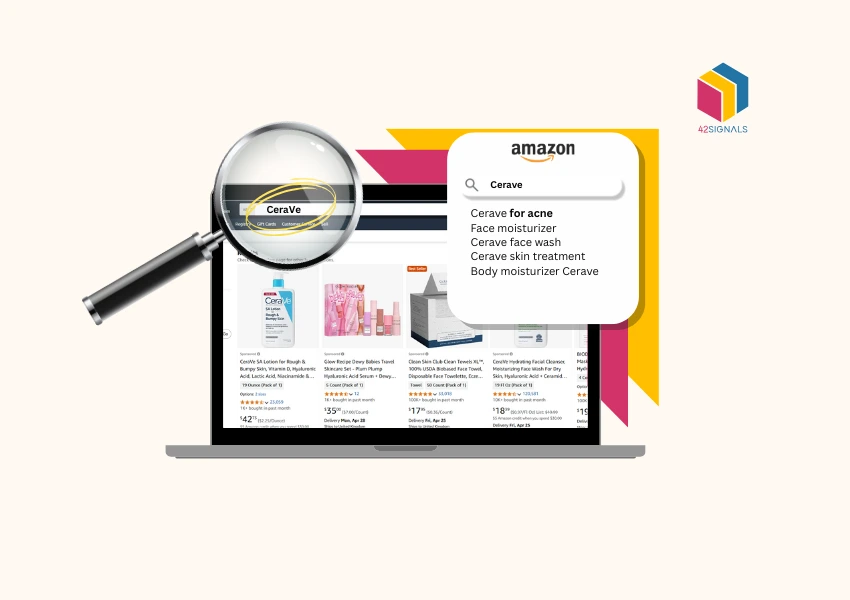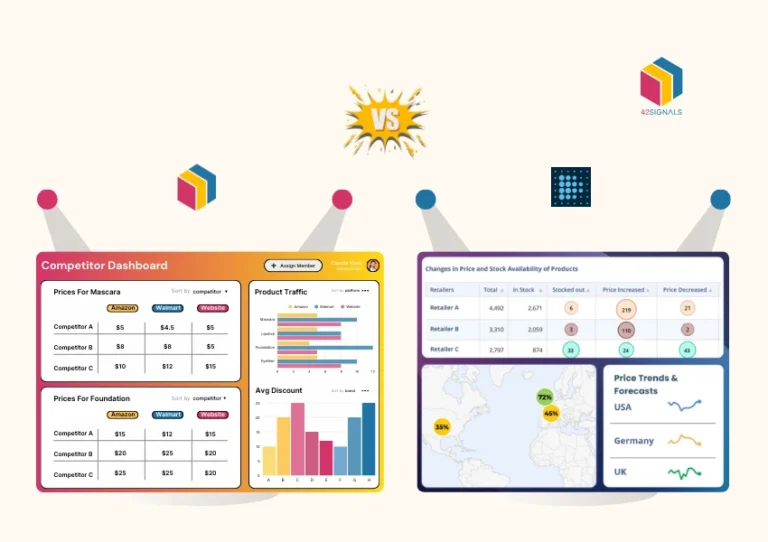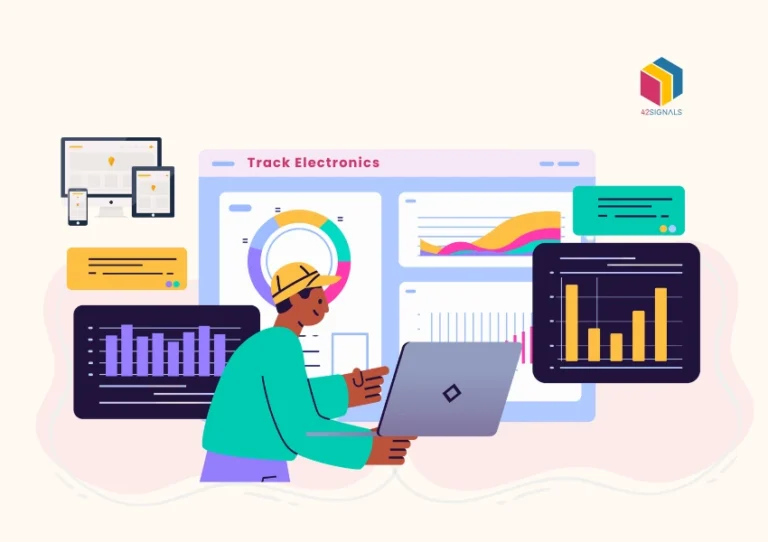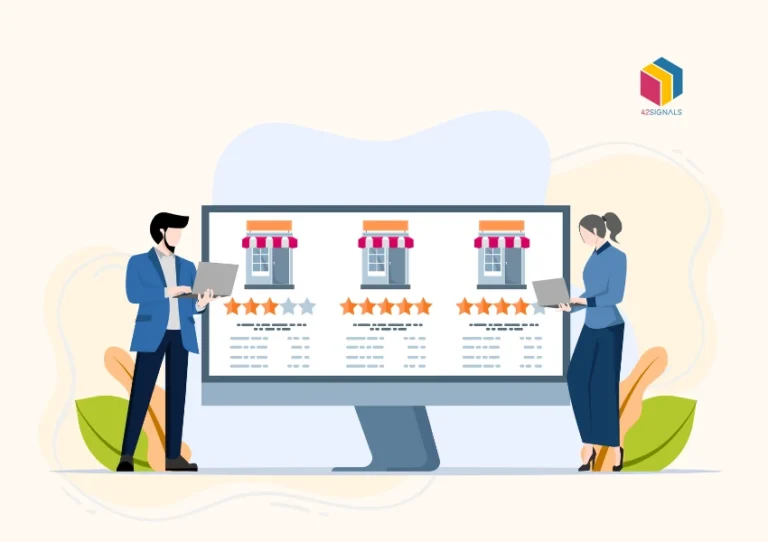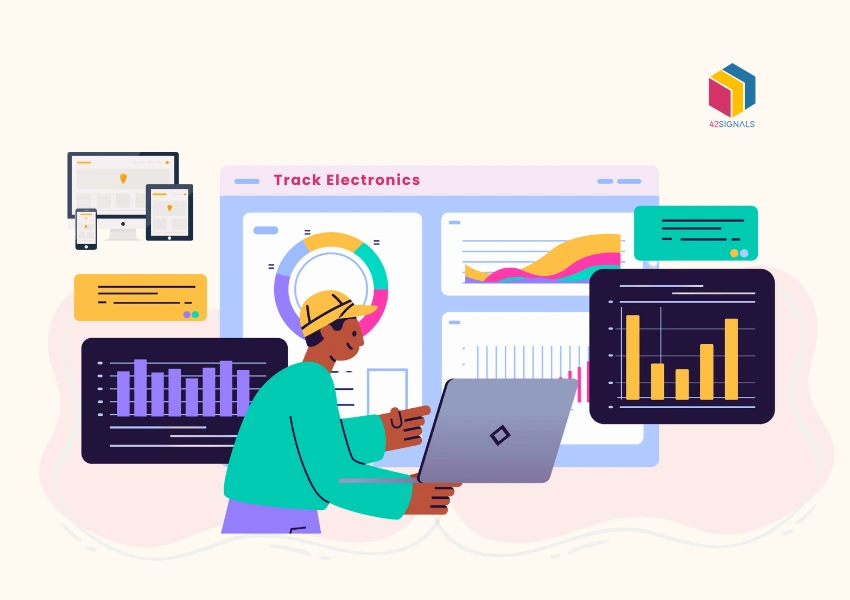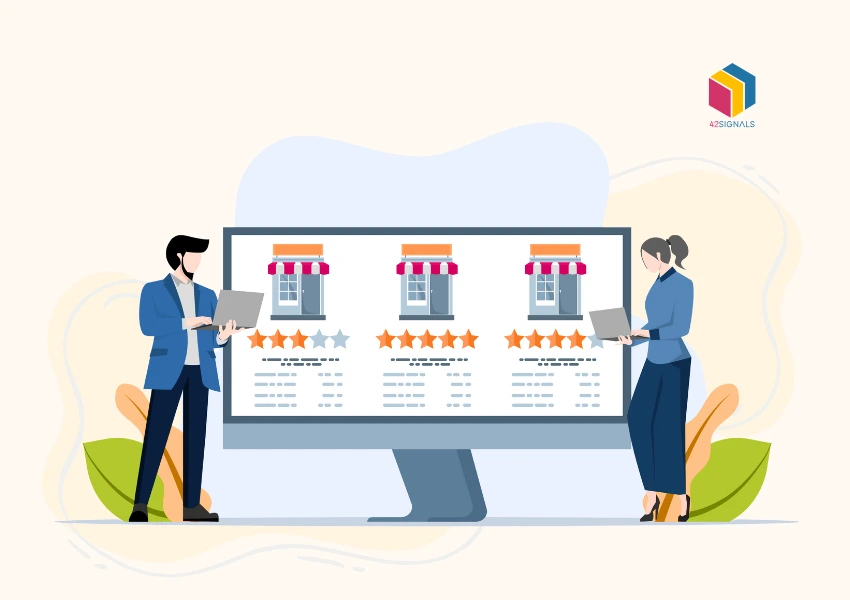Table of Contents
ToggleYou watch your keyword ranking dashboard like a hawk. Seeing your products climb for those crucial terms feels amazing! But then… sales don’t budge. Or worse, you finally grab that #1 spot, run out of stock days later, and watch your rankings vanish. Sound painfully familiar?
If your Amazon data strategy relies only on tracking positions, you’re flying blind. Think about it: knowing your altitude (rank) is useless if you don’t know your fuel level (inventory) or the storm clouds ahead (competitor pricing). You’re setting yourself up for a crash landing.
Here’s the uncomfortable truth: high search rankings are just one piece of the Amazon puzzle. Real, sustainable success comes from connecting three critical elements:
- Visibility: Where shoppers see you (your rank).
- Competitiveness: Your price when they find you.
- Availability: Whether they can actually buy you (stock).
Ignoring pricing or inventory cripples your visibility efforts. Let’s break down why integrating your search rankings tool with these analytics is needed.
The Need for a Search Rankings Tool
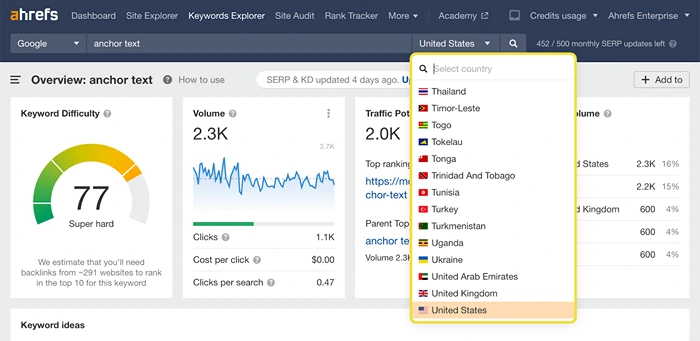
Image Source: Ahrefs
1. The Visibility Mirage: Rankings Alone Don’t Pay the Bills
We obsess over page one for good reason. Amazon data consistently shows a massive chunk of clicks – often over 70% according to numerous seller reports – happen on the first page. The top spots? They grab most sales. Your search rankings tool shows your position, your share of voice (how often your brand pops up vs. competitors), and your share of search (your overall visibility footprint).
This is crucial intel. It tells you if your SEO is working. But here’s the catch: Great rankings don’t automatically mean great sales or profits.
Let me explain:
- Ranking #1 for “premium coffee maker” means nothing if your price is $50 higher than the next guy. Shoppers see your listing, see the price, and bounce. Your keyword ranking dashboard glows green, but your bank account stays empty. Visibility without conversion is just vanity.

- Climbing the ranks for “hot holiday toy” in November is thrilling… until you sell out by December 10th. All that hard-earned visibility evaporates overnight. Competitors swoop in, your sales momentum dies, and your search rankings tool shows a terrifying plummet that it can’t explain was preventable.
- A surge in the share of search for your new product is exciting. But if your pricing isn’t sharp or aligned with what shoppers expect, that visibility won’t turn into cash. Lots of looks, few buys.
Relying solely on your search rankings tool gives you a narrow, often misleading, snapshot. It tells you if you’re seen, but not why people aren’t buying, or if you can even keep that spot.
2. Price: The Make-or-Break Moment of Truth
This is where pricing analytics becomes your secret weapon. Your search rankings tool gets shoppers to your digital doorstep. Your price decides if they walk in or keep scrolling.

Connecting pricing data to your rankings reveals the crucial context:
- Are You Actually Competitive? Are you priced near the others in the buy box? How does your price compare to the top 3 sellers right there on the same search results page? Your search rankings tool shows who is around you. Pricing data tells you what they’re charging. Ranking well but priced way higher? That’s why clicks aren’t converting. Seeing both together shows this instantly.
- The Rank vs. Profit Tightrope Walk: Sometimes, a small price drop can boost conversions dramatically. More sales tell Amazon’s algorithm your product is hot, potentially improving your rank! Conversely, holding a strong rank might let you nudge your price up for better margins. Without seeing price and rank move together, you’re just guessing. Did that price cut actually help your rank? Did a price hike cause a dip? An integrated system tells you.
- Spotting Price Wars Sabotaging Your Rank: Your rank suddenly tanks. You panic and tweak your listing or ads. But what if the real villain is a competitor who just slashed their price by 20%? An integrated dashboard flags this instantly. You see your rank dive alongside that competitor’s price plunge, letting you respond fast and smart.
- The Hidden Cost of Bad Pricing: Holding a top spot with a lousy price is incredibly expensive. You’re squandering your share of voice. Every click that doesn’t convert is wasted potential. Integration shows you where you have high impressions (thanks to rank) but low conversions (likely due to price), highlighting exactly where a price tweak could unlock serious revenue.
Simply put, pricing analytics gives meaning to the numbers on your keyword ranking dashboard. It answers the billion-dollar question: “Okay, shoppers see me… but at this price, will they actually hit ‘Add to Cart’?”
3. Inventory: Don’t Let Running Out Wipe Out Your Wins
Picture this: Your listings are optimized, your ads are crushing it, you’ve watched your search rankings tool like a pro, and you’ve finally cracked the top 3 for your golden keywords. Sales are booming! This is the dream. Now, the nightmare: Your stock hits zero. You’re out of stock (OOS).

Going OOS when ranking well is devastating:
- Instant Sales Blackout: Obviously, you can’t sell air. Revenue stops dead.
- Rankings Plummet: Amazon’s algorithm loves products that sell consistently. Zero sales velocity = your product looks dead. Your hard-earned rankings collapse. Getting back to where you were after restocking can take weeks or months, demanding huge effort and cash. Industry chatter suggests products often lose 30-60% or more of their keyword positions during an OOS, and full recovery isn’t guaranteed.
- Organic Momentum Gone: Good rankings drive free organic sales. An OOS kills that momentum stone dead. You break the virtuous cycle where rank fuels sales which fuel rank.
- Burning Money on Ads: Running PPC while OOS? You’re paying for clicks that lead nowhere. It torches your budget and wrecks your ad metrics.
- Gifting Sales to Competitors: Your absence is their payday. They grab the sales you should have made and cement their own rankings in your spot.
This is why marrying inventory analytics to your search rankings tool is critical:
- Stop Stockouts Before They Start: Seeing your current rank trend, sales speed, and stock levels in one place gives early warnings. Ranking #5 for a major term with sales picking up, but only 7 days of stock left? That’s a five-alarm fire. Order more now. Your search rankings tool shows the rising visibility risk; inventory data shows the ticking stock bomb.
- Stock the Winners, Not the Losers: Not every product or keyword deserves the same stock urgency. Integration lets you focus inventory on products currently ranking well or showing a strong upward share of search traction. Why rush stock for a page 3 dweller when your page 1 star is about to vanish? Allocate your cash wisely.
- Fixing the Damage After Restock: Coming back from OOS? Your integrated view shows exactly how far your rankings fell. This tells you how hard you need to push (extra ads, promotions) to recover. You can see if your tactics are working by tracking rank improvements alongside sales post-restock.
- Avoid Sitting on Dead Stock: Seeing lousy rankings despite healthy stock levels screams a deeper problem (price, bad listing, poor product). This stops you from over-ordering for items lacking the visibility to sell, freeing up cash.
Inventory analytics and inventory alerts turn your search rankings tool from a history book into a crystal ball, helping you dodge the stockout icebergs that sink Amazon businesses.
4. The Magic Happens When They Talk: Integration Synergy
We’ve seen the parts: Rankings = Visibility, Pricing = Competitiveness, Inventory = Availability. The real power? When these data streams talk to each other in a unified digital shelf analytics hub.
True integration unlocks next-level control:
- Smarter Campaigns: Running a sale? See the real impact: Did the discount boost sales enough to lift your keyword rankings? How fast is it burning through your stock? Plan effectively.
- Keyword Spending with Purpose: Your search rankings tool offers keyword suggestions and tracks performance. Integration shows which keywords convert profitably right now at your price and stock level. Shift PPC spend away from keywords where you rank well but are priced out or low on stock. Focus budget on keywords where you have a strong price/inventory spot and room to grow.
- Seeing Problems Coming: Advanced setups can forecast potential OOS dates by combining sales trends with current ranking momentum. They can alert you when a competitor’s price drop perfectly matches your rank slip. They can flag when a rising rank for a keyword with thin stock becomes a major threat. Proactive alerts change everything.
- Diagnosing Dips in Seconds: Sales down? An integrated view finds the culprit fast:
- Rankings tank? (Visibility gone)
- Competitor undercut you? (Price uncompetitive)
- Low or out of stock? (Can’t buy it)
- Or a nasty combo? (Rank slipped and competitor dropped price).
Without integration, this detective work takes forever. With it, the answer is often staring you in the face on your unified keyword ranking dashboard.
- Making Visibility Pay: Share of search (your overall visibility) and share of voice (your brand prominence) matter. Integration ensures this visibility makes money. You see if increased visibility turns into sales (thanks to good pricing) and ensure you can actually ship those orders (inventory). This turns buzz into real revenue and profit.
Integration turns scattered numbers into a clear story. It moves you from panicked reactions to confident, smart decisions. Your search rankings tool stops being just a tracker and becomes the brain of your Amazon operation.
5. Getting It Done: Choosing Tools & Making Integration Work
Knowing why is step one. Now, the how.
What Your Toolbox Needs:
- One Platform to Rule Them All (Ideal): Look for true digital shelf analytics – a single solution combining a robust search rankings tool (tracking rank, share of voice, share of search), competitor price tracking, and inventory forecasting. This kills data silos.
- Strong APIs (Plan B): If one platform isn’t possible, ensure your search rankings tool, pricing software, and inventory system can talk via APIs. It needs solid tech support to set up.
- One Dashboard to See It All: This is mandatory. You need a keyword ranking dashboard showing ranks next to your price, key competitor prices, and your stock levels/days of cover. Jumping between screens kills efficiency.
- Alerts That Actually Help: The system must warn you about critical stuff: Rank drops linked to price changes, high-ranking items with scary-low stock, big drops in share of voice.
- Data You Can Trust: The tool must track ranks accurately and frequently. Pricing data needs to be real-time and correct. Inventory must sync perfectly with Seller Central or your warehouse system.
- Coverage That Matches Your Business: Does it track all your vital keywords and competitors? Does it handle long-tail keyword suggestions well?
Making Integration Stick:
- Start Small: Don’t track everything at once. Focus integration on your top 10 products and their 20-50 most important keywords. Get it working smoothly there first.
- Define What Winning Looks Like: What’s the goal? Maintain page 1 rank for X terms with Y% profit and zero stockouts? Increase share of search by Z% while improving inventory turns? Set clear targets using the integrated data.
- Who Does What? Decide: Who gets price-change alerts based on rank? Who triggers restocks when rank-driven forecasts show risk? Define roles clearly.
- Review Smartly: Check the integrated dashboard weekly/bi-weekly for trends. But rely heavily on automated alerts for urgent fires (stockout risks, competitor price attacks on key products).
- Tweak and Improve: Integration isn’t fire-and-forget. Keep evaluating: Are you getting useful insights? Adjust keywords, competitors, and alert settings based on what you learn.
6. Integration is Survival, Not Strategy
Succeeding on Amazon today demands connecting the dots. It’s too fast, too competitive, and too driven by algorithms to rely on hunches or separate tools.

Your search rankings tool is vital – it tells you you’re in the race. But without knowing if your price is right and if you have enough stock, you’re running blindfolded. Luck might help once, but consistent profit needs the full picture.
Linking your search rankings tool with pricing and inventory gives you:
- Sharper Pricing: Set prices to win and protect profit, guided by real-time rank data.
- Stockout Armor: Prevent OOS disasters that vaporize rankings and sales, powered by visibility insights.
- Faster Problem Solving: Instantly know the real reason behind sales slumps or rank drops.
- Smarter Ad Spending: Put PPC dollars behind keywords where your price and stock can actually convert that click.
- Visibility That Pays: Turn every point of share of voice and share of search into real, profitable orders you can ship.
- True Command of the Digital Shelf: Master visibility, attractiveness, and availability – the whole shopper journey.
Stop letting your search rankings tool live in isolation. Bridge the gap to pricing and inventory. This synergy isn’t just an upgrade; it’s the bedrock of a resilient, profitable Amazon business. It transforms your keyword ranking dashboard from a simple scorecard into your mission control for category domination.
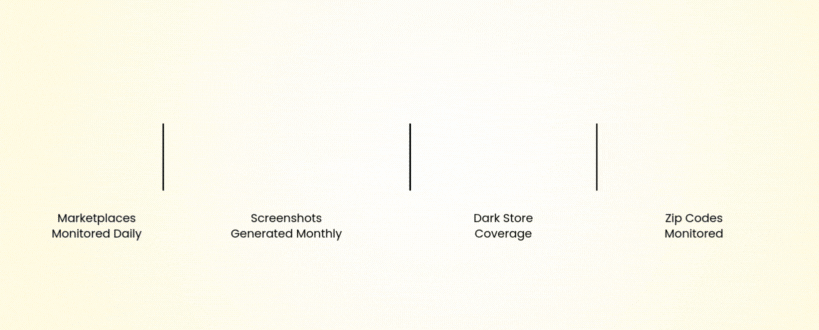
Try 42Signals to see this in effect.
Frequently Asked Questions
What is a search ranking?
A search ranking refers to the position a webpage holds in the list of results returned by a search engine like Google when a user types in a specific query. For example, if your website appears as the third result when someone searches “best wireless headphones,” your search ranking for that term is #3.
Search rankings are influenced by various factors, including keyword relevance, page quality, backlinks, mobile-friendliness, and user experience. Higher rankings usually mean better visibility and more traffic.
How do I see Google search rankings?
You can check your Google search rankings in several ways:
Manual Search: Use an incognito window and search your target keyword in Google to see where your page appears. This method can vary based on location and personalization settings.
Google Search Console: A free tool from Google that shows how your site is performing in search, including the average position of your pages for specific keywords.
SEO Tools: Platforms like Ahrefs, SEMrush, Moz, and 42Signals offer accurate keyword tracking and let you monitor your search positions over time.
How do you find the search rank?
To find the search rank of a particular page or website, you can:
Check the position your page holds in the search results.
Identify the target keyword you’re interested in.
Use an SEO tool (like SEMrush or Ahrefs) to enter your domain and keyword.
Why is search ranking important?
Search ranking is important because higher-ranked pages get significantly more visibility and traffic. Most users click on one of the first few results, often skipping pages two and beyond. A top position signals relevance and trust, which can lead to:
- Increased website traffic
- Higher brand visibility
- Better conversion rates
- More authority in your niche
For businesses and content creators, a strong search ranking can directly impact revenue and long-term growth.
